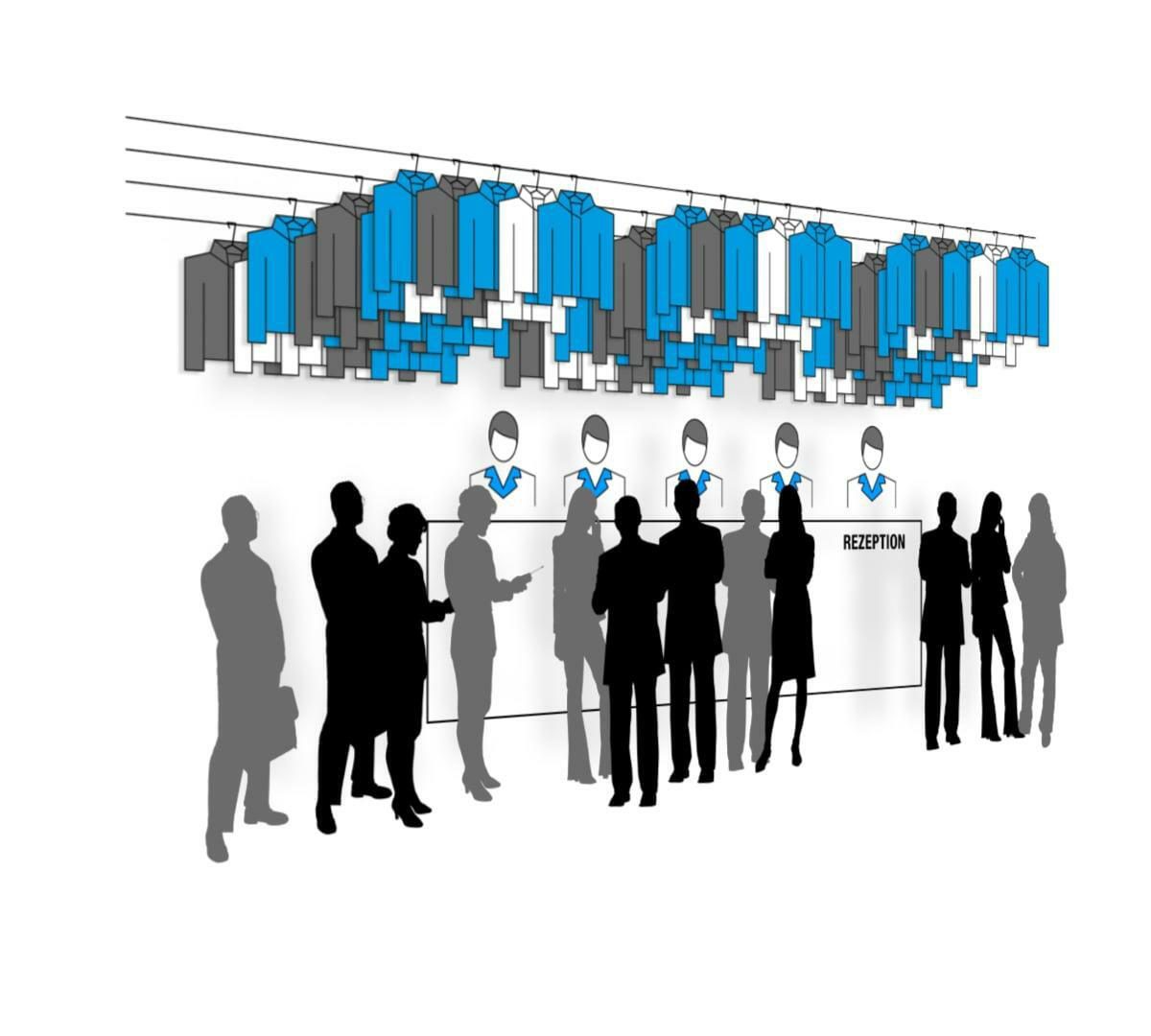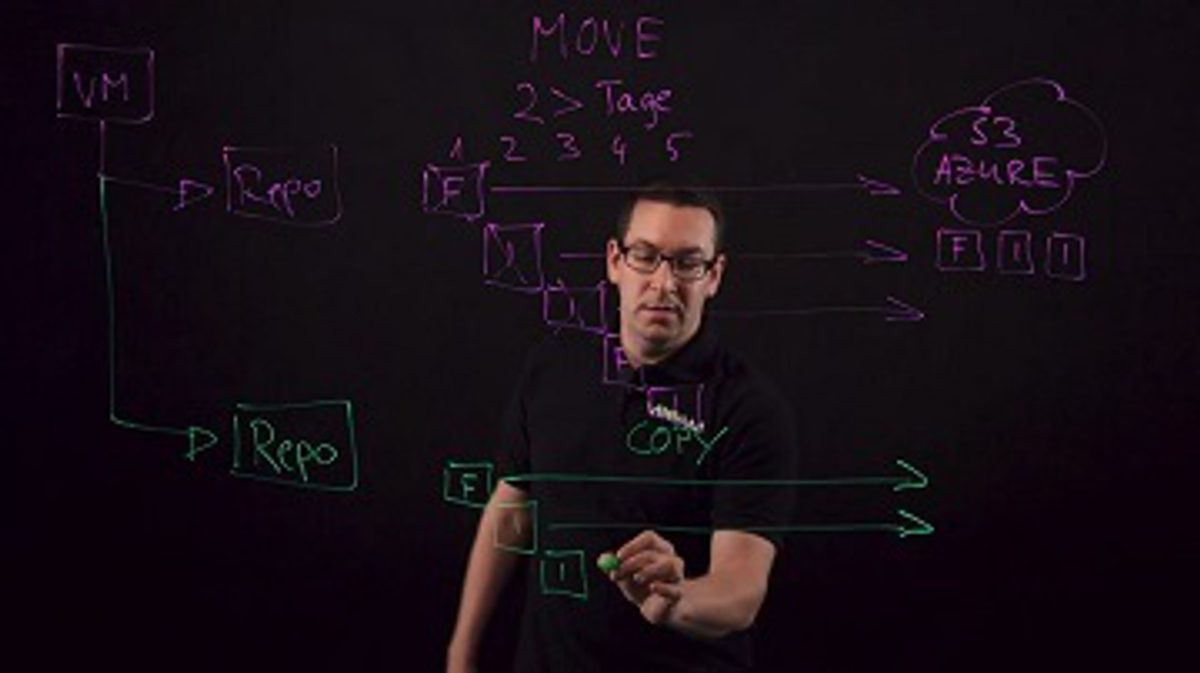Many solutions, such as Office365, require S3-compatible object stores as backup targets.
With S3 Object Storage On Premises, you retain full control over your data.
Benefit from the security and flexibility of Silent Bricks as S3 object storage.
Silent Bricks as
S3-compatible Object Store
The S3 protocol is the quasi-standard for connecting object stores, e.g. to backup software. Some functions are even reduced exclusively to the use of object stores, such as the use of the capacity tier in Veeam Backup & Replication or a backup of Office365 via Veeam.
With the ability to configure Silent Bricks as S3 Object Stores, these functionalities are now available within the Silent Brick System. In doing so, even the advantages of Silent Bricks over cloud-based storage can still be leveraged - and your data remains 100% under your control.
Backing up data from Office365
Data in online applications such as Office365 requires its own data backup, e.g. via Veeam for Office365. While the SaaS provider takes care of the availability of the service, it is up to the user to secure data against accidental or malicious deletion or manipulation.
It was important to us to store data from Office365 including emails locally on highly secure Silent Bricks. This gives us control over the backup and allows us to restore data extremely quickly if needed.
Traditional file storage works like your own wardrobe at home: each jacket has a hanger, each occupant knows their jacket and can quickly find and retrieve it. Scaling only takes place "scale up" by adding more hangers. If the amount of jackets exceeds what residents can clearly remember, the system reaches its limits.
Object stores, on the other hand, function like dressing rooms in a theater; they are designed for hundreds of jackets, and the staff does not know who owns which jacket.

Scale Up (Hangers and rows)
If the wardrobe reaches its capacity limit, it can be easily expanded by adding hangers and coat racks. There is usually enough space, and all other operations are hardly affected. It may take slightly longer to find a particular jacket.
Scale Out (Staff)
If the rush becomes too great, more staff can ensure that requests can be processed more quickly - and above all in parallel. In most cases, there are also several check-in areas, one for the left and one for the right side, for example, so that requests can be processed where they occur. This scales both capacity and performance.


Unique ID (Ticket)
Neither does the checkroom staff know which jacket belongs to whom, nor does the visitor know where exactly his jacket is stored. The assignment takes place via a unique ID, which the visitor receives from the staff in exchange for the jacket and via which he can safely get his jacket back. Based on the ID, the staff always knows where the corresponding jacket can be found, regardless of who is currently serving.
What is On Premises S3?
Originally, S3 was developed by Amazon for their web services as public cloud storage. However, not all users want - or are allowed - to store their data off-site. In order to still be able to use applications based on the S3 interface, the open source S3 protocol is implemented for on premise storage. This creates a local object store that behaves like an Amazon S3 thanks to S3 compatibility.Benefits of local storage
Corporate policies or legal requirements may make it impossible to store data in the public cloud - then only on premise storage remains anyway. But there are also other good reasons for local storage:
Control & Security
Local storage provides maximum control. You know exactly where and how your data is backed up, and can immediately control access to it when needed. Add to that the high security of Silent Bricks, which protects data from data loss via SecureNAS with Triple Parity. The ability to eject Silent Bricks and store them away from the online system (Air Gap) provides additional protection for sensitive data that is impregnable to ransomware.
Costs
Provided it is not completely "cold" data that is hardly ever accessed and never has to be retrieved completely, local storage can be cheaper over its lifetime than public cloud services, which can incur high costs for storage and retrieval. However, the pure storage costs may also be significantly lower than for cloud services due to the modularity of the Silent Brick System.
Performance & Flexibility
Since the On Premise S3 storage resides in the same system as the rest of the secondary storage and close to the primary storage, data transfer is unbeatably fast - even and especially for large data volumes, e.g. for a full restore. The S3 storage scales independently from the rest of the storage in the Silent Brick System and can be used for other applications at any time when not needed.
Applications for On Premises Object Stores
An increasing number of services and applications support the S3 protocol.
Backup Storage
Data protection requires secure storage and regular, reliable backups. Modern backups are divided into several steps to fulfill the 3-2-1 rule. For offloading complete backup sets, more and more software vendors support object storage as a target - some features are even only feasible this way, like the use of the capacity tier at Veeam.
SaaS Data Protection
Many online applications (e.g. Microsoft Office 365) are not automatically protected against data loss by backups and have to be backed up separately. If this data is not to be stored in a (further) public cloud, backup solutions are available that access S3-compatible storage, e.g. Veeam for Office 365.
Storage for Endpoint Backups
Also so called endpoint backup clients, i.e. programs for backing up workstations, can increasingly use S3 compatible storage directly as a storage location. For Silent Brick customers who already have a Silent Brick System installed, this offers affordable backup options beyond Apple TimeMachine or similar.
FAQ
S3 is a protocol for the asynchronous connection of so-called object stores. It was developed by Amazon for their Amazon S3 (Simple Storage Service), an (object) storage service offered by Amazon in their public cloud AWS. Since the S3 protocol is open source and thus available to everyone without cost or license fees, many cloud storage services but also manufacturers of local (on premise) storage systems now use this protocol to be available as storage for software that requires an S3 connection.
Originally, this type of storage is about reducing storage costs. Since the cost models of cloud storage are different than the investment and maintenance costs for on premise systems, there can be significant savings at first glance. This is especially true for large amounts of data that, if possible, never need to be retrieved. Retrieving large amounts of data from cloud storage is often not only tedious and of limited reliability, but - depending on the provider's cost model - also quite relatively expensive.
Unlike the classic file store, where storage is by location (directory) and name of the file, in the object store any data packages (objects) can be stored. The only management are so-called buckets, i.e. "data buckets", in which these objects are placed. Objects can be whole files but also just fragments of them, each object has a unique ID, has a freely definable set of metadata and the actual data. The metadata can also be used to link multiple objects, which Veeam uses, for example, to deduplicate backup sets. Via the unique ID, each object can be requested and loaded again.
In doing so, the load for receiving, storing or retrieving data can also be distributed across multiple points (nodes). Thus, an object store is often not only "scaling up" (expanding capacity), but also "scaling out" (expanding capacity and performance). File storage usually scales only in capacity, which has limits.
In addition to SMB and NFS, S3 shares can now also be created for SNAS volumes. Currently, up to 10 shares are possible system-wide. Each share can contain any buckets, which can be managed in the system or via an S3 client (e.g. the backup software). Access is via the name and "secret" defined when the shares are created.
Many use Silent Bricks as storage for Veeam backups. With the Capacity Tier, Veeam offers a function to copy or displace backup data to an object store - a combination of both is also possible. Using this feature can have benefits depending on the backup strategy - for example, the storage capacity required for full backups in the Capacity Tier is reduced due to the integrated deduplication. The asynchronous protocol allows swapping or copying to a second site.
The support of S3 and the use of the Capacity Tier on Silent Bricks (instead of in a cloud storage) now allows full control over all data, the use of the integrated data protection (redundancy), and the possibility to completely protect data from access or manipulation via Air Gap.
However, the large number of existing software solutions that support the S3 protocol still allows many uses in the area of secondary storage.
As a Silent Brick customer you should have received an email with release notes and download for the software 2.33 (or higher). If not, please contact Silent Brick Support at [email protected] or by phone at +49 89 890 47 (tel:+498989047) - 772.
Office 365 (and most other SaaS services) provide resilience and availability, but not backup and integrity of data. If data is accidentally or intentionally deleted, changed or manipulated, recovery is usually only possible within narrow time limits - if at all.
It is therefore necessary to back up data from these applications separately. In the case of Office 365, this can be done using Veeam for Office 365, for example. This requires a small direct attached storage (1% of the volume) as a cache. The actual backup then takes place on an object storage, which must be connected via S3 (or similar protocols). NAS storage is not available as a storage target.
